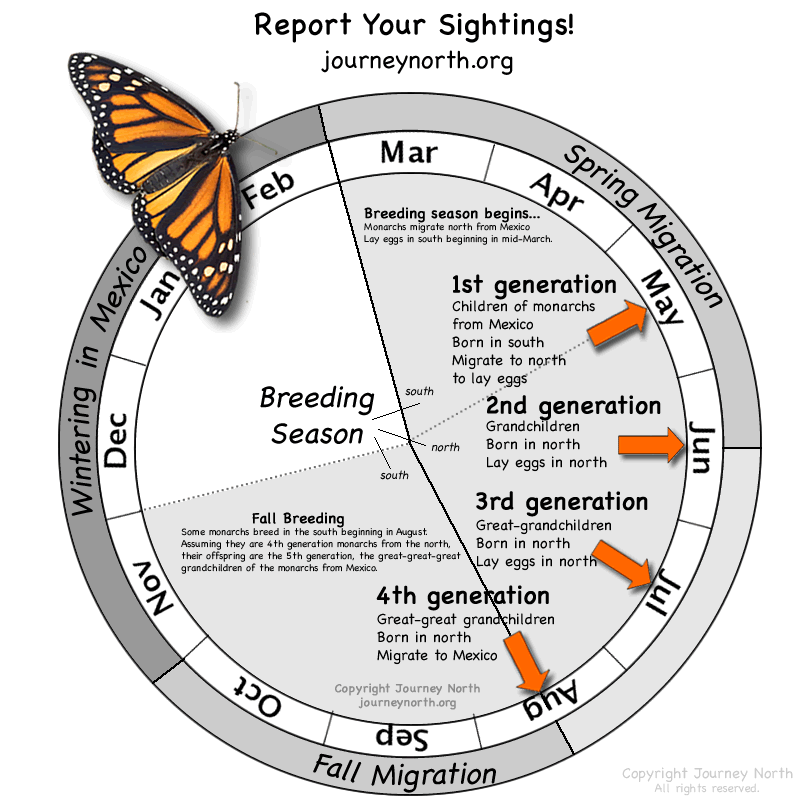By Elizabeth Howard
| Please Report Your Sightings! |
- News: Signs of Change
- Maps: Report Your Sightings
- Journal: How Far to Mexico?

Telling the Story
Amy Evoniuk
| Shorter days and changing temperatures are about to trigger migration. The first signs that the journey south is underway are expected any day.
Emerging in Diapause Becoming Migratory
Appearing in the South
If the monarchs originated in the north, their offspring are likely the 5th generation of the year. |
|
 |
 |
|
| What to Report | Adult Butterflies map | list | animation |
Eggs and Larvae map | list |
 |
 |
 |
| Fall Roosts map | list | archives | animation |
Peak Migration map | list | animation |
|
| Journal | ||
|
||






